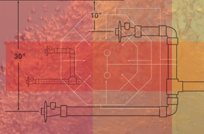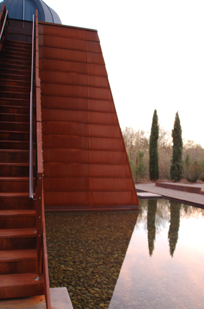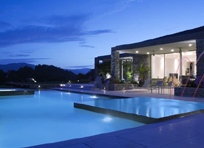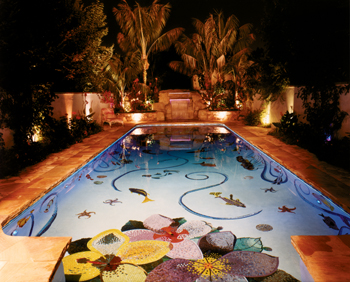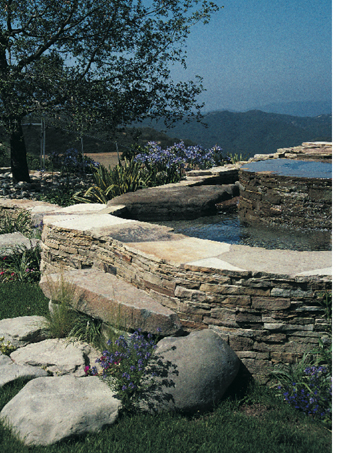Pools & Spas
Of all the features associated with inground swimming pools, attached spas almost certainly have the most complex designs. Achieving proper hydrotherapy-jet action requires the interweaving of air lines, water lines, fittings, jets and associated pumps, blowers and motors in a way that delivers results the customer wants and expects. And making mistakes is definitely costly: Once the plumbing is set in concrete, there’s no easy way of turning back. The bottom line: You have to
‘Project of a lifetime” may not be enough to describe our work at Cima del Mundo. [T]he hilltop home had experienced many changes since its original construction in 1925, including service as a makeshift monastery as well as a stretch of years in which the property was abandoned and allowed to go almost disastrously to seed. In all its history, however, the estate has never been through as much by way of transformation as it has
Among the wonderful benefits of working in the custom watershaping business is that you never really know what sort of projects will wander into view. Through the years, we at Live Water Creations of Santa Rosa, Calif., have certainly participated in developing and executing some unusual designs, but I can honestly say that working on one that included a huge, beautiful steel pyramid topped by a deep-space telescope was something that
We describe them using many terms – as vanishing-edge, infinity-edge, negative-edge, knife-edge, slot-overflow, flooded-deck, gutter or perimeter-overflow pools, among others – but no matter what we call them, all of these watershapes operate on the same basic premise: By moving a sufficient quantity of water from a collection basin or tank to a visible main vessel at a sufficient rate, we can create systems in which
This project was all about fun and finding ways to infuse watershapes and the overall landscape with childlike senses of playfulness and wonder. At a glance, of course, it’s obvious that this particular approach wouldn’t work for too many clients, but in this case, we were working with a woman who wanted her yard to express her love of color, her sense of humor and her unparalleled inclination
This project is all about making connections – connections between the inside of a home and the outdoors; between surrounding wide-open spaces and an intimate backyard; between the colors of the hillsides and the materials used in crafting the watershape; between the clients’ desire for recreation and their passion for beauty; and between the beauty of nature and the modern, sculptural lines of the design. In style, this freeform, vanishing-edge pool and raised spa are
Of all the visual distractions we’ve considered so far in this series of articles, the one I will discuss here might be the detail I could most safely skip. After all, the necessity of making skimmer lids less visually intrusive has been part of dozens of articles published in WaterShapes – most notably in several by David
Beyond their ability to hold and circulate water, virtually all concrete watershapes have one more thing in common: Depending upon the size and complexity of the installation, their internal surfaces must be penetrated at a few points (and sometimes at many points) to move water from the
To me, there’s no watershape more relaxing or intrinsically beautiful than a well-designed, well-appointed spa. The combination of warmth, immersion and jet action is enough to knock the edge off the roughest day, and I’ve always found that conversation comes more easily when I’m neck-deep in










